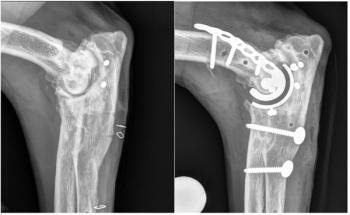
Anesthesia reboot: Erase these myths and misconceptions
Veterinary anesthesiologist Dr. Ann Weil provides five important pointers on anesthetizing cats and dogs.
Are you up-to-date on the best anesthetic practices to use in your patients? You may be holding on to important misconceptions, including the following:
1. It is true that most opioids can cause hyperthermia in cats. A recent study has shown a strong association of hyperthermia with hydromorphone, especially when ketamine is used concurrently.1 My solution: Administer a microdose of medetomidine (1 µg/kg) postoperatively in cats that have received hydromorphone and ketamine.
2. Misconceptions abound in terms of breed “sensitivities” to anesthetic drugs. The only documented sensitivity is associated with greyhounds and barbiturates. Their livers cannot process these drugs in the same manner as other dogs. However, since barbiturates are rarely used anymore, this problem is almost obsolete.
3. Excessive bradycardia from dexmedetomidine should be handled by reversing the drug with atipamezole, not by using an anticholinergic such as atropine or glycopyrrolate. Partial reversal can be done with a half dose of atipamezole.
4. If you are giving injectable combinations of anesthetic drugs, keep in mind that hypoxemia and hypercapnia are likely. Thus, be sure to use an oxygen mask in these patients.
5. Stop using the old-school 10 ml/kg/hr anesthetic fluid rate as a guide. The 2013 American Animal Hospital Association and American Association of Feline Practitioners fluid therapy guidelines advise new initial fluid rates: 5 ml/kg/hr in dogs and 3 ml/kg/hr in cats (see
REFERENCE
1. Posner LP, Gleed RD, Erb HN, et al. Post-anesthetic hyperthermia in cats. Vet Anaesth Analg 2007;34(1):40-47.
Newsletter
From exam room tips to practice management insights, get trusted veterinary news delivered straight to your inbox—subscribe to dvm360.






